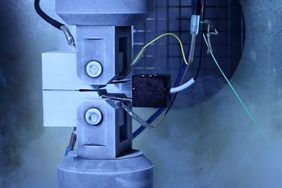"Fitness for purpose" of structural parts and components
What may sound like a health programme in fact denotes the technical usability of components, which represents a key area of research at the Materials Center Leoben. The background: Increasing pressure to achieve higher material and energy efficiency across all sectors requires the design of ever lighter structural parts using fewer materials.
This can be achieved through various measures:
- the use of stronger materials,
- the use of lighter materials with a high level of strength,
- improved design and
- optimised production and targeted optimisation of material properties in highly stressed component areas
Materials today are being utilised to their fullest possible potential, pushing them ever closer to their limits. Efficient design can only be achieved without compromising safety if the materials and their properties are well understood and can be exactly described.
The challenge of small defects
One particular challenge is that materials are generally not entirely free from defects and it is not possible to detect all defects, even with state-of-the-art inspection methods. We must therefore assume that all materials and components contain minor unidentified defects which, however, must not lead to failure. These defects are often just pores or tiny cracks which may form the starting point for fatigue cracks in service.
Damage caused by material fatigue is often the result of cyclic stress. Slow crack formation starting with small internal defects is decisive for the lifespan and failure probability of the component. The term "damage-tolerant design" denotes that these internal defects do not lead to failure during the component’s life cycle.
The Materials Center Leoben is undertaking extensive research into the formation of small cracks. Small cracks behave differently to longer cracks and in particular grow more quickly. Sophisticated experimental methods and new calculation methods are required to characterise the behaviour of small cracks and crack development.
Software to calculate the behaviour of small cracks under fatigue stress
The MCL has developed its own software to simulate the behaviour of small cracks. This software can be used to calculate the anticipated lifespan and service intervals of components containing small cracks or components where small cracks must be assumed due to the detection limits of the non-destructive testing methods applied. By combining simulations of small crack formation with fracture mechanical calculations and critical material parameters (e.g. fracture toughness), the lifespan of components can be predicted much more accurately than was previously possible. The available experimental and numerical methods now allow MCL to make components "fit for purpose".
Impact
The new experimental methods and crack formation models are already being used in the first projects. The key applications include concepts for damage tolerant design and establishing inspection intervals for high-stress components in common rail systems, electric generators and railways.



















